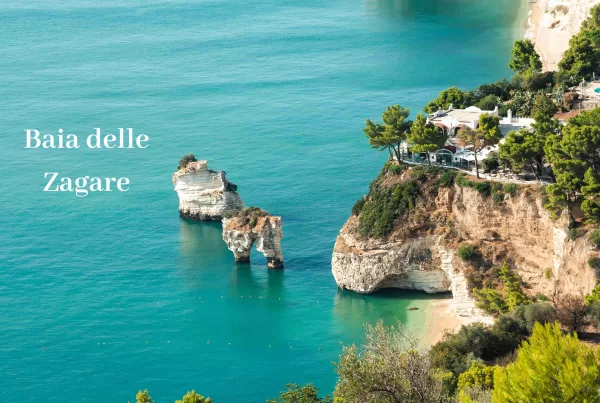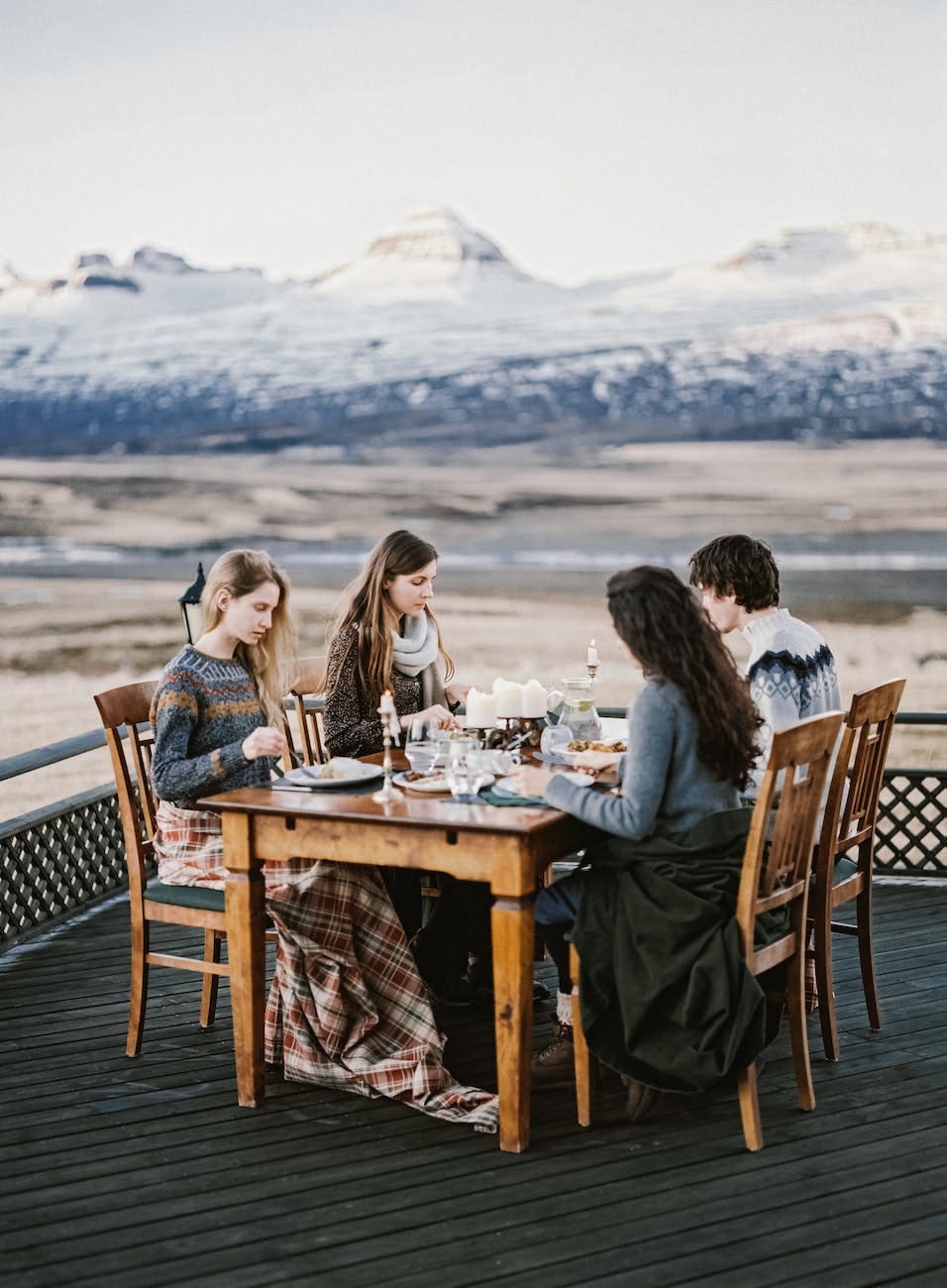
Table of Contents
25 Greatest Icelandic Foods You’ll Want to Feast On:
Iceland’s rugged and wild landscape up near the arctic circle inspired a unique and delicious cuisine. The best part about visiting this remote island is the good food that will tantalize your taste buds.
So read on for the 25 Great Icelandic dishes!
#1 Braudterta (Icelandic Sandwich Cake)
A Braudterta is a savory Icelandic Sandwich Cake. It’s like a layered cream cake. Typically the bread is toasted and then used to layer the filling. The filling can be anything your heart desires.
Fresh or smoked salmon is often used. Ham and/or smoked lamb is also a popular filling. The frosting is typically mayonnaise. The cake is garnished with sliced hard-boiled eggs.
Veganism is growing in popularity in Iceland. You can sometimes find a version with veggies and vegan mayo!
In 2019, there was even a Sandwich cake competition in Rekyjavik. They gave out awards for the most beautiful, the best tasting, and the best looking cakes.
#2 Skyr (Icelandic Yogurt):
Skyr is a delicious, creamy delicacy. If I could compare Skyr to one thing, it would be like a really strong, really thick and creamy, Greek yogurt.
Like all yogurt, Skyr is made with milk cultured with live bacteria culture.
Skyr is a traditional food. It has a unique tangy flavor that’s perfect for breakfast, a snack, or as a base for dips and smoothies.
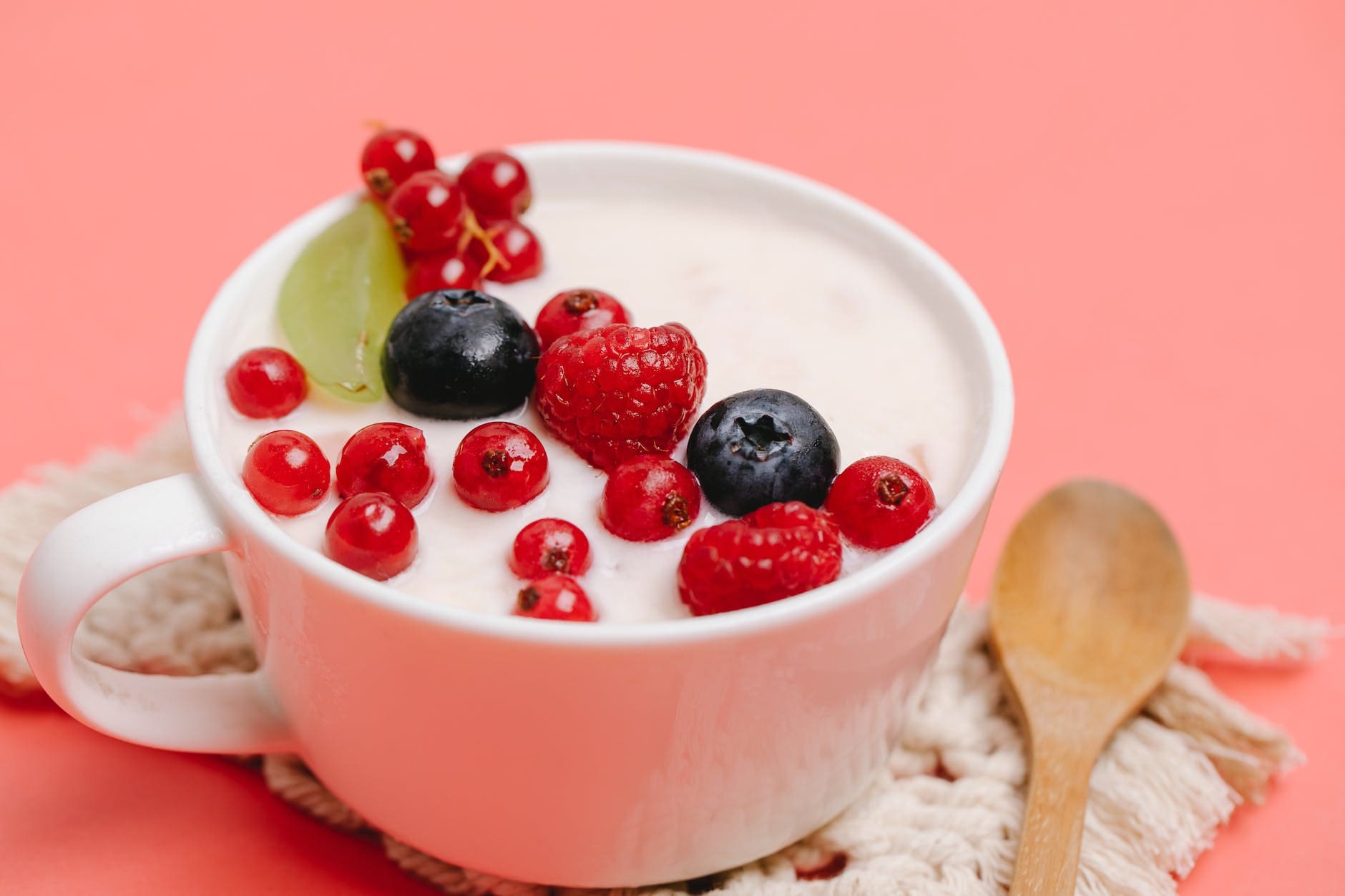
Skyr is an Icelandic food staple that is high protein and has been eaten for over 1,000 years! Today, you will find skyr at almost any of the grocery stores or convenience stores in Iceland.
It’s also a component of breakfasts at many restaurants.
Skyr has even made it’s way to some grocery stores in the United States in recent years. If you find yourself completely addicted, you can get more when you get home.
Once you find some, try eating it the traditional way. Top the Skyr with fresh berries and a light dusting of sugar. It’s rich in protein and filling for your Icelandic adventures.
#3 Hákarl (Fermented Shark):
Hakarl is a dish made from fermented Greenland shark meat. It’s the true test of bravery for an adventurous foodie.
While not everyone’s favorite food, it is worth a story. I first had Hakarl at the Bjarnarhöfn Shark Museum in Iceland. It’s a popular food with tourists.
The pungent aroma of the fermenting meat hanging on posts outside was very, very… well, pungent. But hanging in the open air is now part of the fermentation process.
Looking back, this should have been enough of a warning – but I tend to learn by doing… so I ate some.
It tastes quite mild initially, but then a wave of ammonia hits you unlike anything I’ve eaten before.
Several chuckling Icelanders assured me that Hakarl was an “acquired” taste. I gotta say, I am not sure I’ll be eating it often enough for the “acquisition” part.
Icelanders hunted Greenland shark for the shark liver oil. They used to oil machine parts.
They also used the abrasive shark skin as sand paper.
The rest of the meat however, is poisonous to humans when fresh due to the large amounts of urea in the blood stream. Yum!
Needless to say, there wasn’t much else to do with the toxic meat. So Icelanders buried the flesh underground to rot.
At some point many centuries ago, some unknown Icelandic hero got really, really, hungry.
Because hunger make you do crazy things, they dug up the rotten meat, and decided to give it a try. Much to the surprise of our hero, after fermenting, the poisonous urea dissipates and the shark meat is safe!
Thus, the dish Hakarl was born!!
Where to find Hakarl?
Today fishermen do not purposefully fish for Greenland shark.
Sometimes, on accident, they catch the shark as by-catch in fishing nets.
Instead of letting it go to waste, they give the shark carcass to a few distributors. As such, there are a couple of places on the island that allow you to sample this traditional delicacy.
To sample the fermented shark, you can head over to Café Loki in Reykjavik. Or do you want to know everything about how someone decided to eat a toxic shark? Go to the Bjarnarhöfn Shark Museum in Snæfellsnes.
Shark samples are part of the tour and you’ll get to see the fermenting process up close and personal.
#4 Humarsupa (Langoustine Soup):
Humarsupa is and Icelandic delicacy translated as lobster soup. But its actually made with a species of prawn called langoustine.
Locals affectionately call this an Icelandic lobster. No matter what you call it, it’s delicious.
Humarsupa is the PERFECT dish on a cold or wet day. It’s warm and creamy.
They make it with tomato, cinnamon, coriander, celery, red pepper, and of course chunks of Icelandic lobsters.
Sometimes it has potatoes or peas.
You can find this in lots of restaurants but the one at Sægreifinn in Rekjavik is particularly good.
#5 Pylsur (Icelandic Hotdog):
As many in my family will tell you, I’m more of a hamburger gal at a backyard cookout. I’ll eat a hotdog sure – but it’s rarely going to be my first choice.
That is, of course, unless I am in Iceland. These are simply the best hot dogs I have every tried.
Pylsur is an Icelandic hot dog. It is, perhaps, the most popular Icelandic street food. If you go to Iceland, you need to try it.
They make Pylsur with the highest quality lamb, pork and beef. The animals graze all summer on rich grass high in the Icelandic mountains.
The high-quality meat is topped with fresh raw onion and crispy fried onions – served on a soft, warm bun.
You can find Pylsur at hotdog stands all over Iceland and it is a cheap and easy snack to eat on the go.
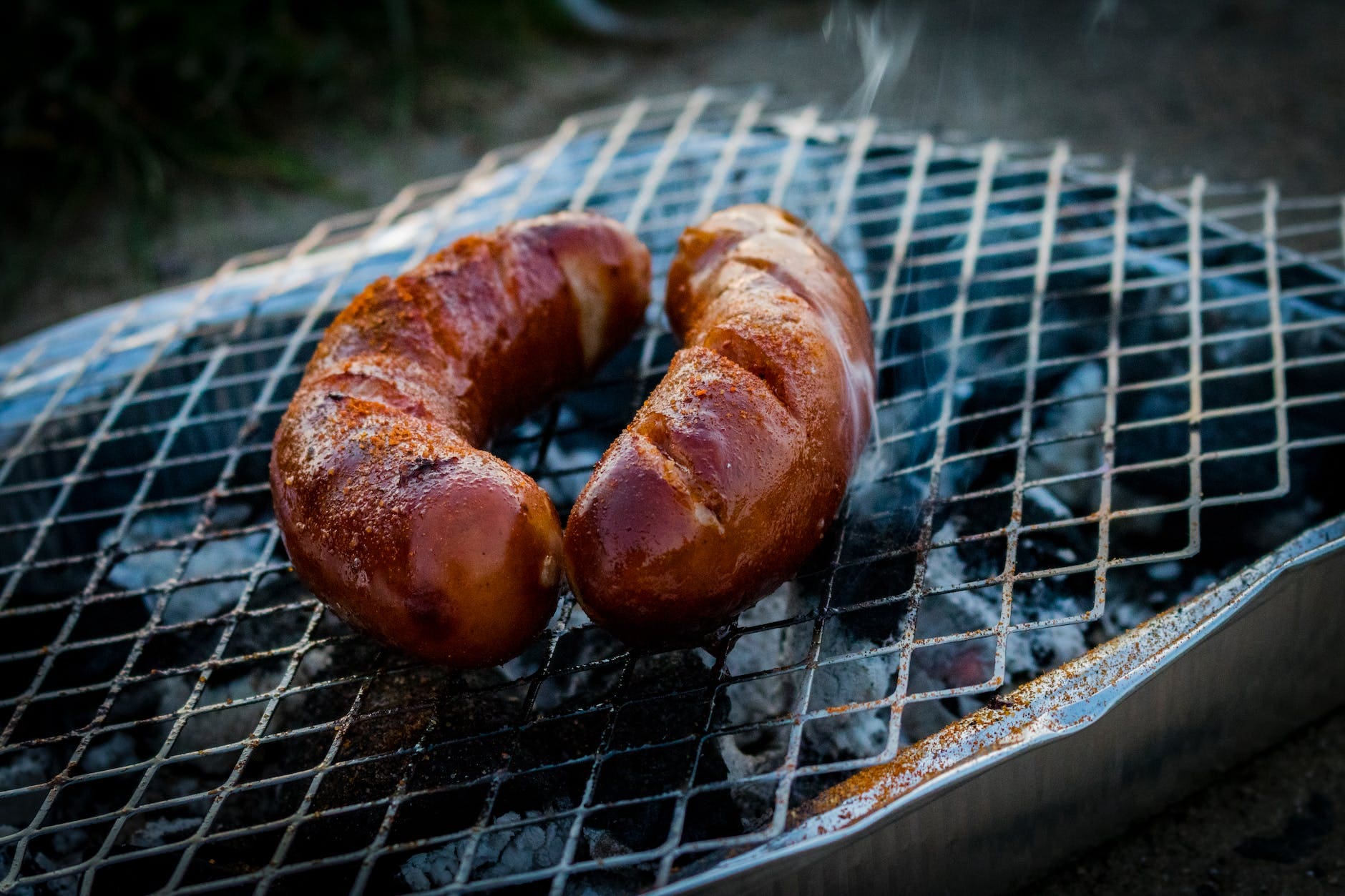
Pylsur is the food of choice for many late-night party-goers returning from the clubs. It’s a fast food and a good choice when you want to try a popular dish.
You can sauce it up with all sorts of things like creamy remoulade and pylsusinnep (a sweet brown mustard).
You can find these in almost every town and city in Iceland, and even in the duty free upon checkout.
If you’d like to go to a stand once called “The Best Hotdog Stand in Europe” head over to Bæjarins Beztu Pylsur.
This hot dog stand been serving up Pylsur to hungry people since 1937. This includes U.S. President Bill Clinton and the band Metallica.
Just go on up to the front counter and ask for one with everything. They’ll do the rest. Thank me later.
#6 Kjötsúpa (Lamb Soup)
Kjötsúpa is a tasty lamb stew. It’s a traditional Icelandic food dish made with tender, slow-cooked lamb and winter root vegetables. All this is in a rich and flavorful broth. Pair it with a traditional rye bread.
Iceland can be a cold, wet, and windy place and a warm bowl of Kjötsúpa is the perfect antidote.
This Icelandic meat soup has been a staple on the Icelandic table for generations. You’ll find it served at family gatherings and special occasions.
Sometimes the broth is thickened with rice, rolled oats, or barley. It’s warm, comforting, and quintessentially Icelandic.
If you don’t have an Icelandic grandmother in the Westfjords to make you a bowl, head over to Islenski Barrinn.
This Icelandic pub in Rekjavik is famous. Its has Kjötsúpa on the menu, and if you’re still hungry – there are plenty of other Icelandic offerings to be had. If you want to mix it up, they also have some more recognizable eats.
While I haven’t talked about the beer scene in Iceland too much, I highly recommend trying out some of the local brews.
I don’t know if it’s the fresh water quality or what but the local beers here are really good!
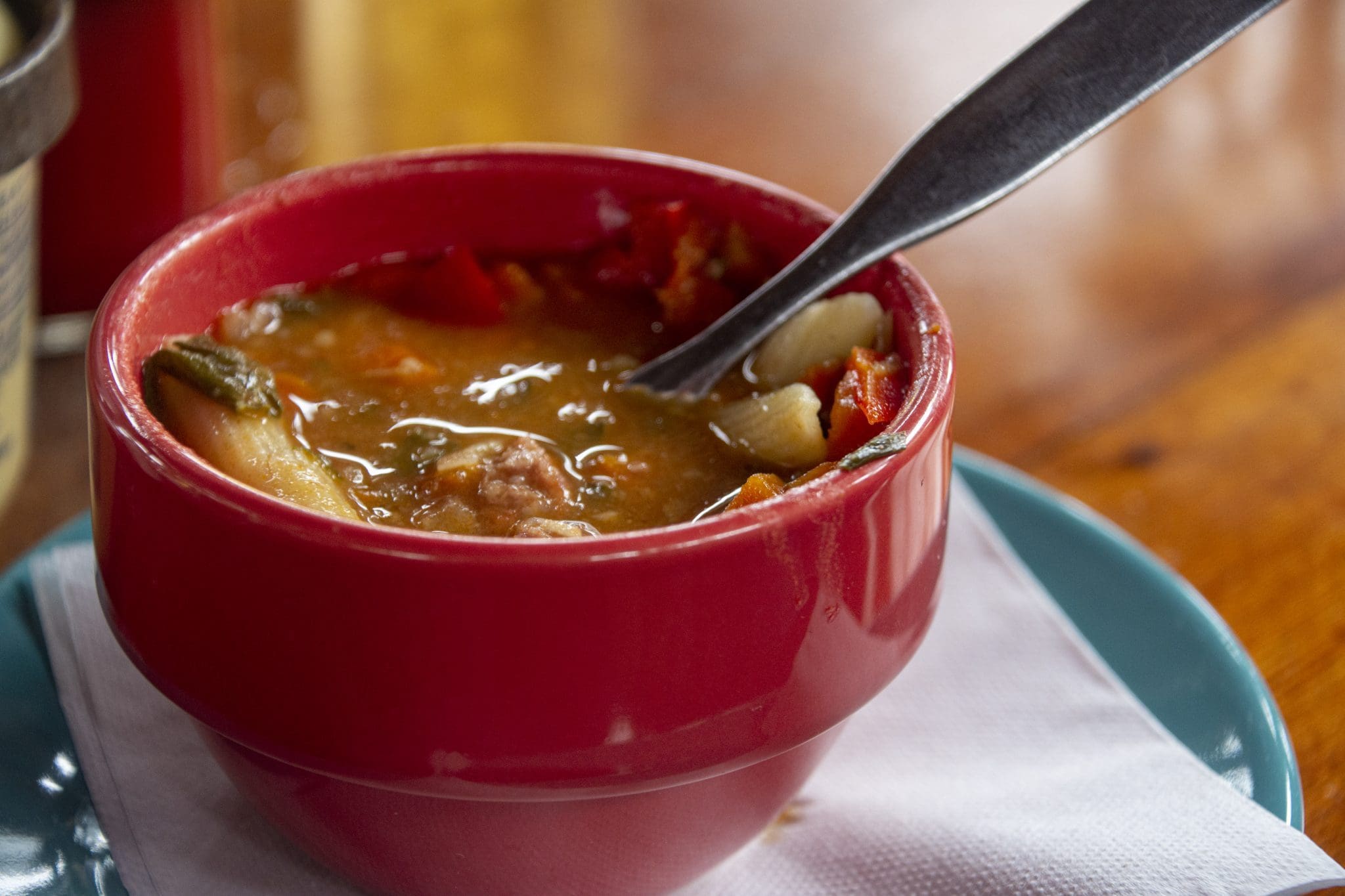
#7 Hverabrauð (Hot Spring Bread)
Hverabraud translates to hot spring rye bread and is traditional Icelandic cuisine. Iceland is covered in natural hot springs Icelanders call ‘hot pots’.
On one trip to Iceland, I got a campervan and drove around the whole country, soaking in hot springs many nights.
While some, like the famous blue lagoon, are great for a warm soak, others are boiling hot. So hot, the geothermal energy heats the immediately surrounding land to oven-like temperatures.
What’s an entrepreneurial Icelander to do? Make bread of course! It’s the same bread as the famous Rúgbrauð but cooked in the ground near the hot springs. Taking advantage of all that geothermal heat!
The bread is a dark icelandic rye bread that is crustless, dense, and a bit sweet. Icelandic people often serve this Icelandic food with mutton pate, a smoked lamb called hangikjöt, or pickled herring.
Dried, you can mix it with buttermilk to make porridge or you can soak it to make a bread soup with raisins and lemon.
Foodies be warned, this bread has another name – þrumari or “thunderer” as excessive consumption can cause flatulence. If you’re doing the aforementioned campervan thing, I’d leave the windows open.
Try Rúgbrauð all over Iceland, but the stuff at Brauð & Co or Sandholt Bakery is very good.
#8 Fish and Chips…
I’m not going to sit here and tell you that Iceland invented “Fish and Chips”. Or that it is a cornerstone Icelandic food group. This is predominantly for two reasons.
First, I know you wouldn’t believe me.
Second, I have no idea who invented Fish and Chips but it was probably the British. Please hold…
*Several minutes later* – Okay, unsurprisingly England invented fish and chips. Credit goes to Joseph Malin, an Ashkenazi Jewish immigrant to London, who opened the first “chippy” in 1860. The more you know.
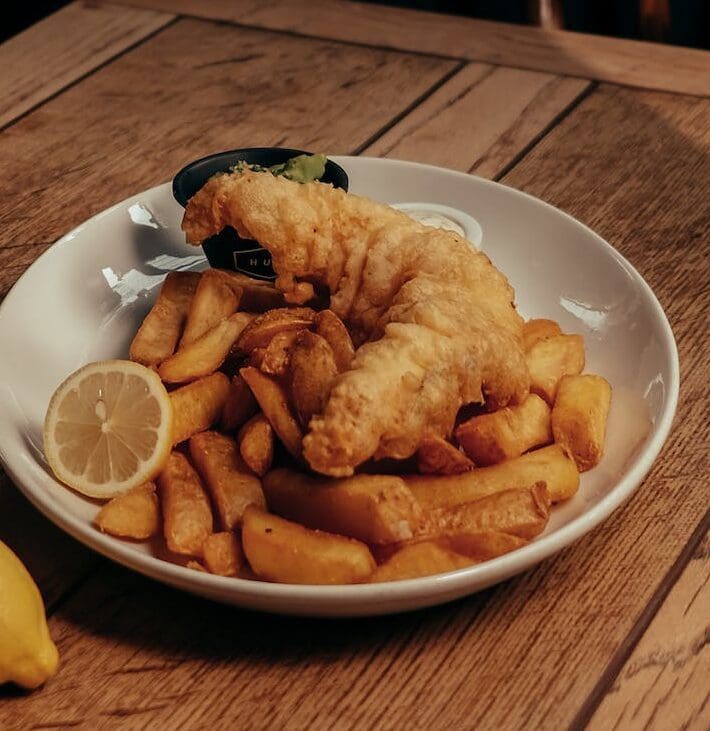
BUT while England may have invented the fish and chip, Iceland made it truly their own. In the Icelandic version they use spelt flour. It creates a lighter, almost tempura-like texture.
The chips (French fries for the Americans) are not fried, but roasted to perfection. Traditional Icelandic dipping sauce is made from skyr, herbs, spices, and olive oil.
Like the above dishes, Fish and Chips are available all over Iceland. The one at Reykjavik Fish Market near the harbor has great reviews and nice views.
#9 Harðfiskur (Hard Fish)
This is a very popular snack in Iceland. This “hard fish” is something that you’ll find packaged in grocery stores and even gas stations.
It’s basically fish jerky and has been eaten in Iceland for centuries.
Drying fish is a great way to preserve it for long period of time so you can eat it throughout the year.
It’s an easy to transport snack, whether you’re on a viking ship or traveling around the ring road with a camper van.
One method favored by locals is to slather the fish in butter. It’s tough – but oddly addicting. We just munched on it as we drove around the island.
Million dollar idea: Flavored Hardfiskur…. Teriyaki, Spicy Ranch, etc.
Let me know if you find any because I’ve only had the plain stuff!
#10 Kleinur (Icelandic Donuts)
Kleinur is basically an Icelandic Donut that means “Angel Wings”. It is a mildly sweet dessert. Icelanders are sweet enough as is.
This deep fried pastry, reminiscent of a donut, has variations that can be found in many Nordic countries.
The dough is made with cardamom, nutmeg, and yogurt. The spices provide a warm and comforting flavor.
Check out this recipe for making Kleinur at home!
#11 Hangikjöt (Smoked Lamb)
This is one of the most beloved holiday dishes in Iceland. It is icelandic lamb smoked to perfection. Hangikjot has been called Iceland’s answer to proscuitto and it doesn’t disappoint.
Sometimes, it’s served with peas and a bechamel sauce.
Try the recipe here.
#12 Flatbrauð Með Hangikjöt (Flatbread with Smoked Lamb)
Take the Smoked Lamb sliced very thinly and place it on top of a flatbread smothered in butter. There you go, Flatbrauð Með Hangikjöt.
The flatbread is a simple but delicious rye bread. While the smoked lamb is popular, you can top Icelandic flatbread with anything from cheese to a type of liver paté called kindakæfa.
If you want to make this Icelandic food for yourself, try this recipe from Icelandic Magazine.
#13 Fresh Fish
In case you couldn’t tell, Icelanders love fresh fish. You can get so many types of fish in Iceland and it’s not all dried or smoked. Fish here is often served fresh. Some of the most popular types of fish eaten in Icelandic food are:
- Icelandic Cod
- Haffock
- Atlantic Salmon
- Wolffish
- Herring
- Arctic Char
- Halibut
- Lumpfish
- Lingcod
It’s always fresh and prepared in a variety of ways, often taking advantage of fresh herbs like arctic thyme.
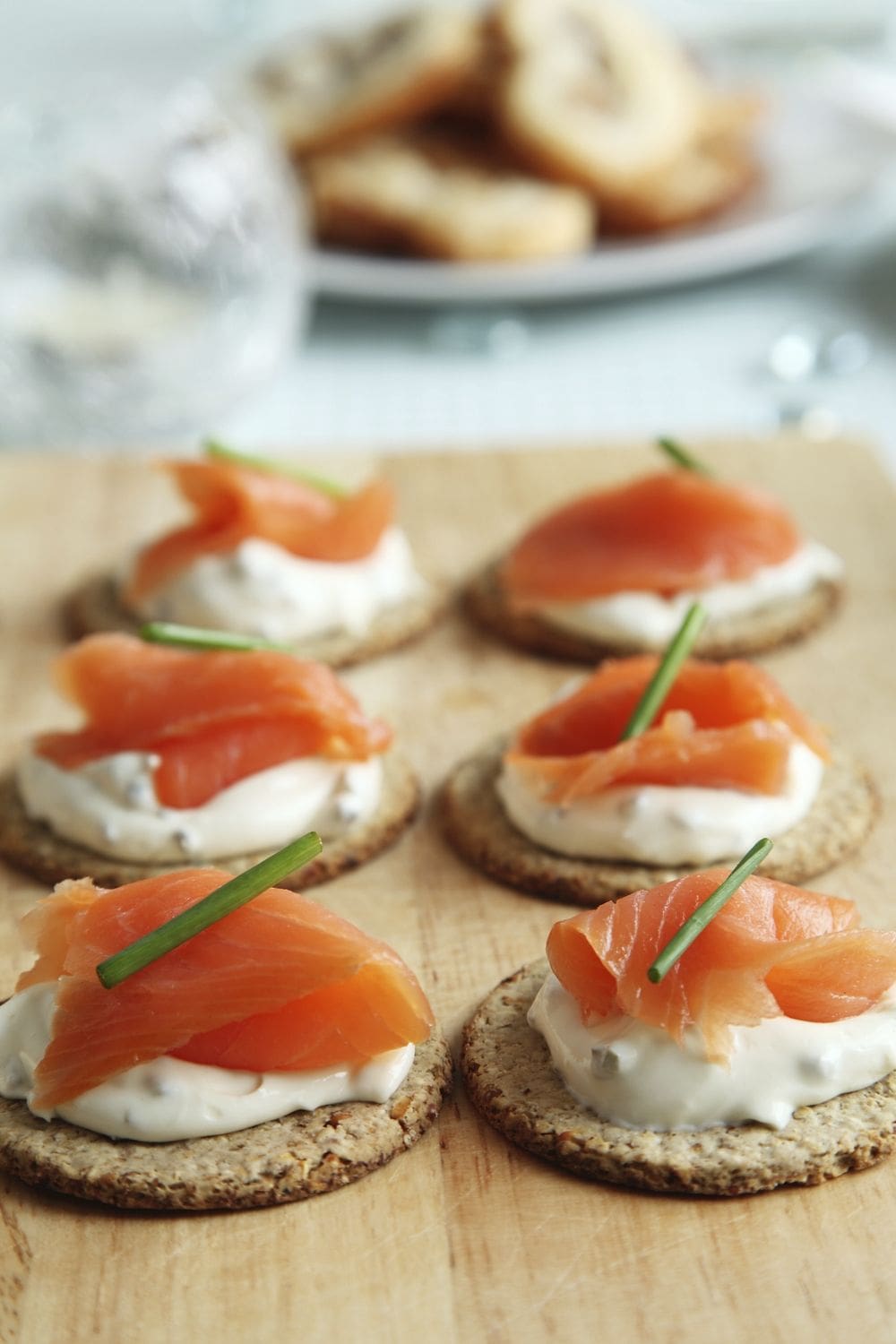
#14 Plokkfiskur – (Fish Stew)
Plokkfiskur is an Icelandic Food translates to plucked fish. It’s a simple and delicious Fish Stew. It’s typically made with haddock and cod. The stew broth uses onion, milk, flour, butter, salt and pepper. This creates a thick and creamy chowder.
Finally, you can add additional things like cheese, bay leaves, curry, or chives. If you’re interested try this traditional recipe.
#15 Pönnukökur (Icelandic Pancakes)
Thin and delicious, this Icelandic food is similar to a crepe. Pönnukökur is an Icelandic food can be topped with anything you like.
My favorite includes lingonberry jam, skyr, cream or fresh berries.
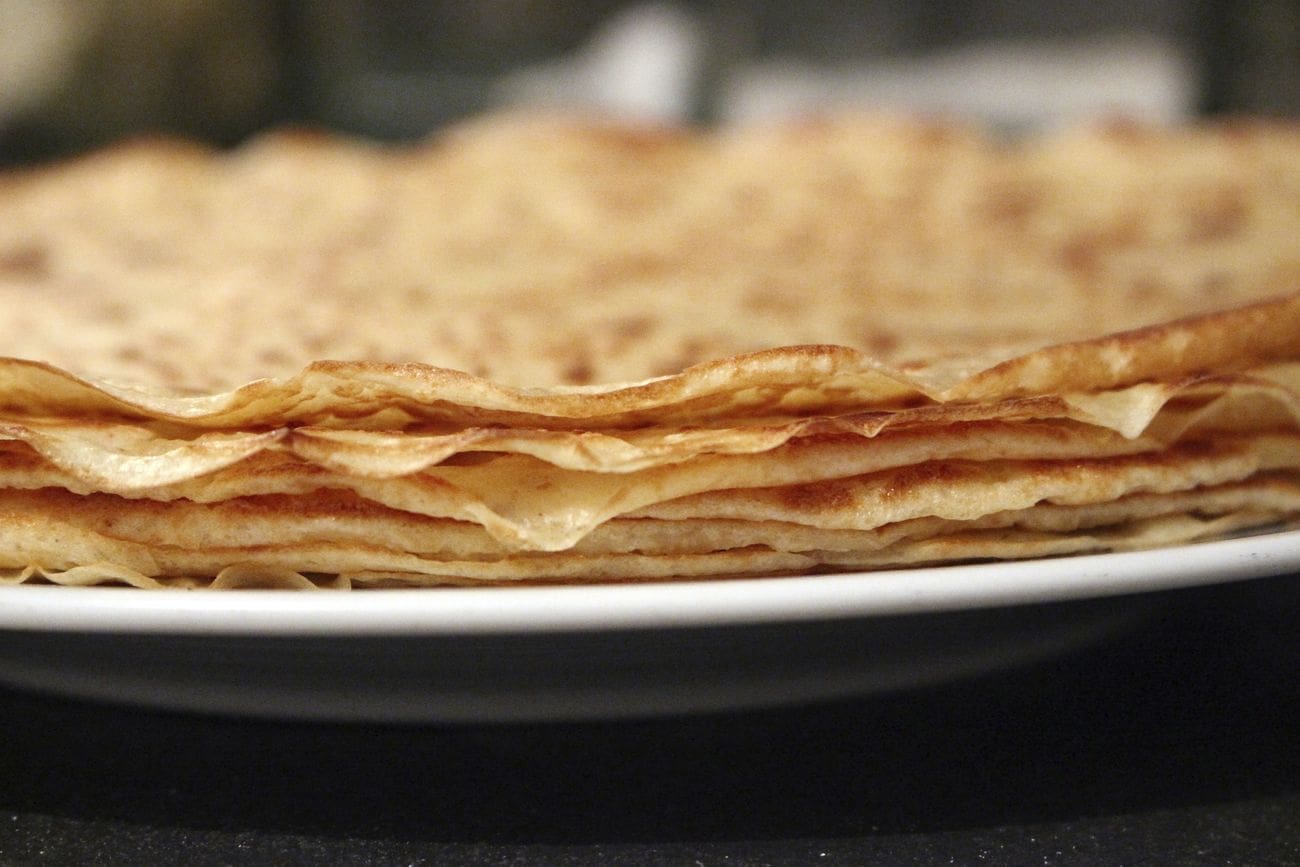
#16 Hafragrautur (Oatmeal)
Oats are a hearty cold weather crop that is popular in Icelandic food. This warm and filling meal is easy to make and can be topped with anything your heart desires.
It’s perfect for fortifying yourself before that waterfall hike. Add berries, cinnamon or cream cheese to make this Icelandic food positively delicious.
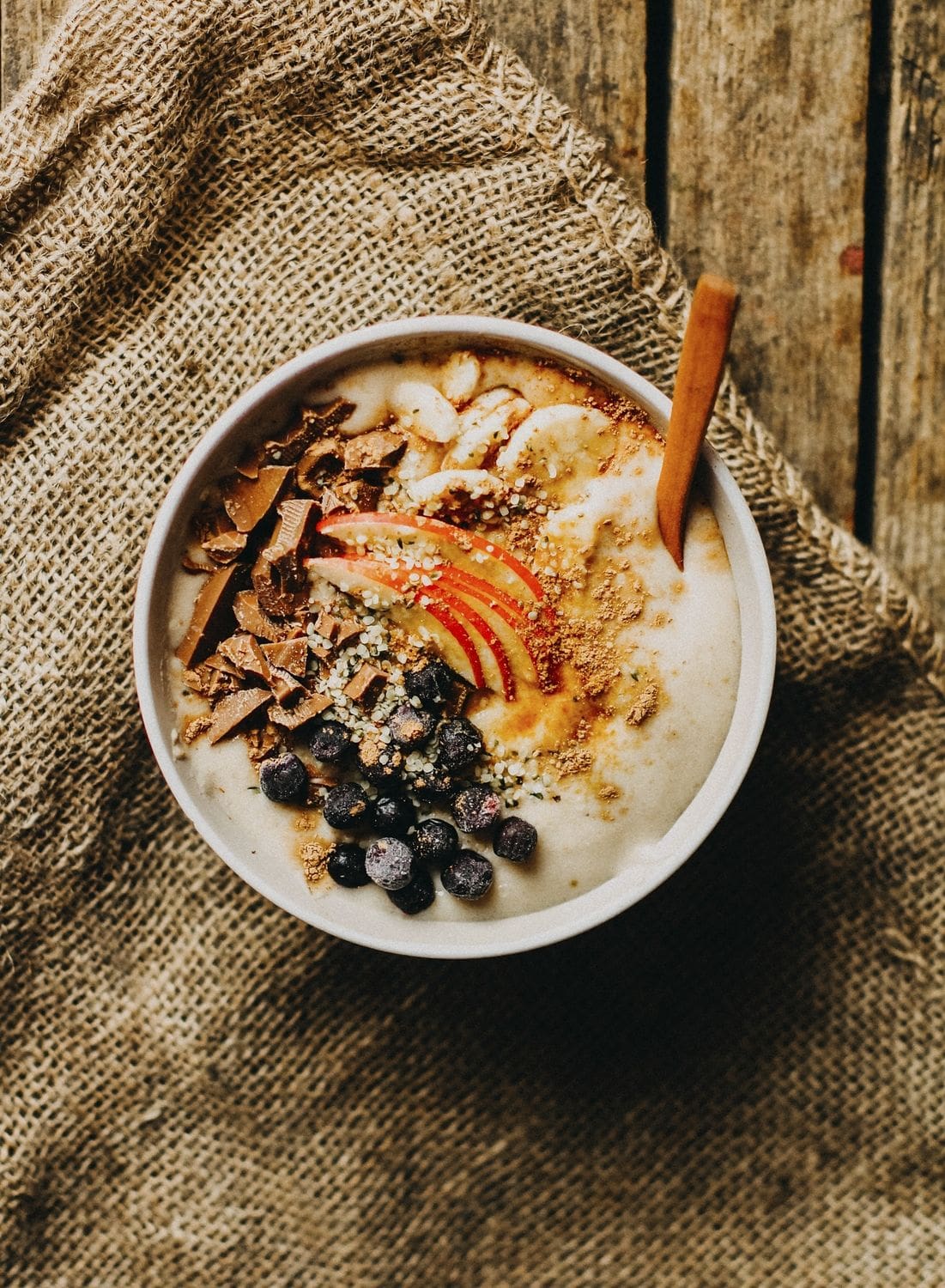
#17 Vöfflur (Icelandic Waffles)
Vöfflur are Icelandic Waffles. This Icelandic food is heart shaped and often topped with powdered sugar instead of maple syrup.
They are especially incredible when made with Vanilla Sugar.
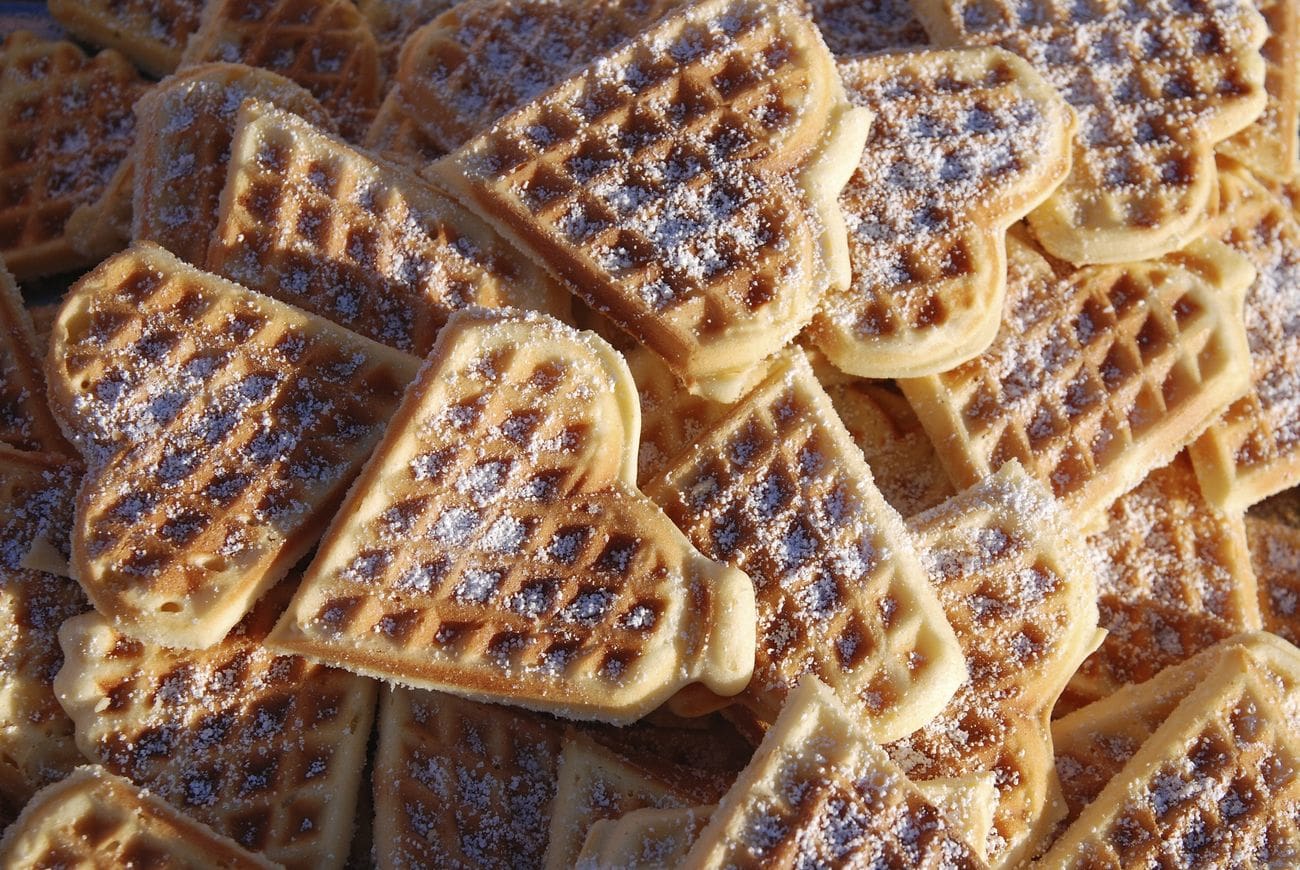
#18 Rugbrauosis (Rye Bread Ice Cream)
This isn’t exactly what I would call a traditional Iceland food. It’s more of a modern twist on traditional favorites.
Rye bread Ice Cream is lightly sweet and has a wonderful texture thanks to the crunchy rye bread. Top it with Rhubarb Caramel glaze. Rhubarb is a delicious part of Icelandic food.
It’s available in some local restaurants like at Cafe Loki. You can also often find it at an ice cream shop.
#19 Kakósúpa (Chocolate Soup)
This is essentially a cup of hot cocoa. What makes it a “soup” is that Icelanders use a thickening agent, typically potato starch. This makes it thicker and a unique Icelandic food. It’s usually served hot on a cold day.
For an extra oomph, add a shot of Brennivin aka “The Black Death”. Brennivin is essentially Icelandic Schnapps. It’s an unsweetened schnapps and it’ll give the soup some additional depth of flavor.
#20 Svið (Sheep’s Head)
This is one of the traditional Icelandic dishes. Iceland was a hard place to live in not so long ago. No part of the animal could be wasted when making Icelandic food.
That’s where Svið begins. Svið is made from Iceland’s many free-roaming sheep. The head of the sheep is cut in half and the brain is removed. Then the head is singed to remove the fur, and boiled.
You can also cure the head in lactic acid. Icelandic food doesn’t always sound appetizing.
While I know, it doesn’t sound tasty. But in reality, it’s not bad. Most of the meat is in the cheek which is a tender meat and flavorful. You can dip it in some rhubarb jelly.

#21 Hrútspungar (Sour Ram’s Testicles)
Remember, every part of the animal is used in Icelandic food. So Hrutspungar is ram testicles pressed together and preserved in whey. That gives it the nice sour flavor.
Sometimes gelatin is also used to create a sort of testicle Jell-o to form a meat cake.
You can cut it thinly and put it on crackers for a pâté.
#22 Lambalæri (Leg of Lamb)
This Icelandic Food is a classic leg of lamb. In Iceland, a traditional method of preparation is to use Icelandic mountain herb mixes. In addition to Arctic thyme, you might find Chervil and Icelandic Moss also used.
Berry marinades are also used. Crowberries, blueberries and whortleberries are all available wild in Iceland. They’re delicious fresh, on skyr, or in a marinade for this lamb.
#23 Síld (Marinated Herring)
Síld is marinated herring. It’s a popular Icelandic food and eaten throughout the Nordic countries. It can be marinated in all sorts of different mixes. After marinating, you’ll want to cook the herring (often boiled).
The herring is served with a huge heap of butter on the classic rye bread.
#24 Jólakaka (Christmas Cake)
Okay, enough with the Icelandic food sheep dishes. And the fish. Jólakaka is a cake spiced with cardamom and filled with raisins. If you’ve ever had a coffee cake or a fruit cake, it’s a bit like that.
It’s easy to make and while popular Icelandic food around the holidays – or on Christmas day – it is found year round. Get it at a bakery or order it with a cup of coffee at your favorite coffee shop!
#25 Lakkrís Toppar (Licorice Meringue Cookie)
These meringue cookies are filled with chocolate covered pieces of licorice. The licorice is mild and chewy and the chocolate adds a great sweetness. Icelandic food isn’t usually very sweet, but these are an exception.
Sometimes chocolate chips are added as well.
Very addicting and a classic Icelandic sweet!
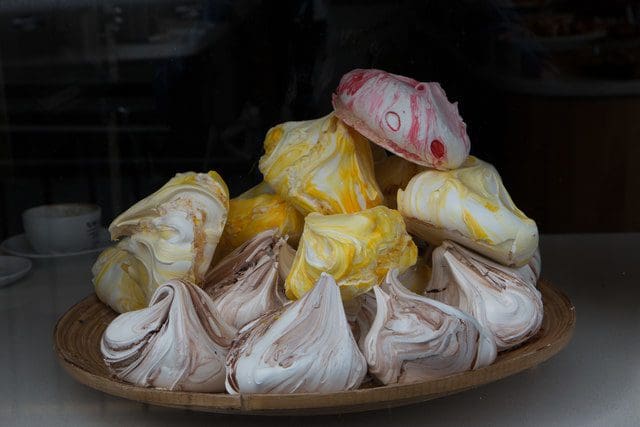
What to Avoid Eating in Iceland
Tourism has many benefits. Unfortunately, some terrible practices continue long after they should have ended. This is typically because of the money from tourists.
That’s why there are some things you’ll never find me doing even if it’s convenient or could be good for a tourist blog. For example:
- I’ll never ride an elephant in Thailand.
- I’ll never buy ivory
- I only use coral reef safe sunscreen when snorkeling in the ocean.
- I’ll never eat vulnerable, threatened, or endangered species.
I’m not always perfect but I try to be better.
Here is what I would avoid eating in Iceland:
#1 Puffin:
Puffins are listed as Vulnerable to Extinction. Their populations are decreasing in much of the world.
I’m not opposed to hunting but I am opposed to market hunting to supply restaurants. In my own country (USA), market hunting destroyed many species like our bison herds and beaver. We no longer allow market hunting in the United States.
People who have eaten puffin meat also described the bird as “too gamey, tough, and briny”… Which sounds kind of like how I imagine eating a seagull might taste…
So go to Iceland and admire these amazing birds, but don’t order them in a restaurant.
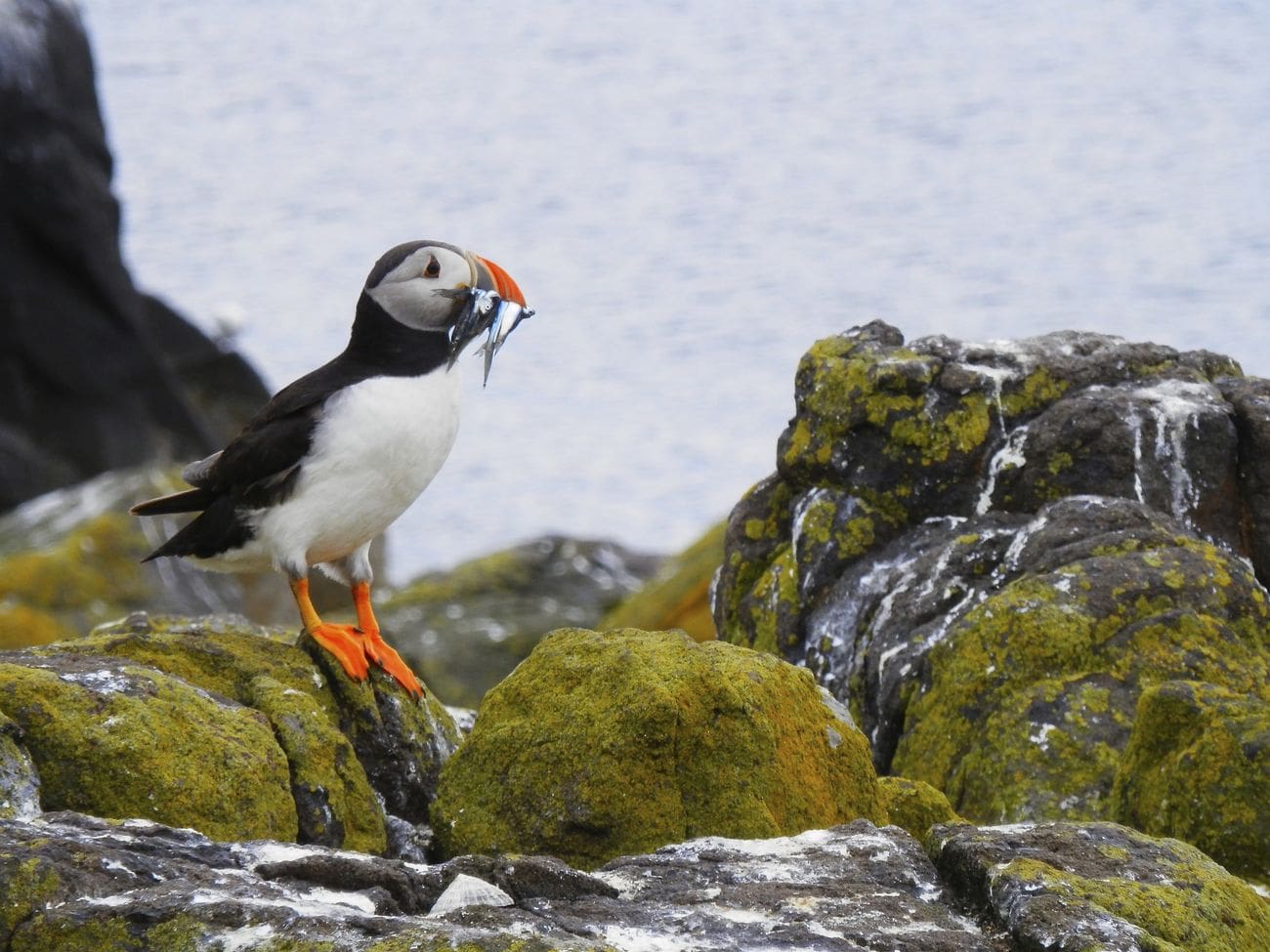
#2 Whale Meat:
I understand subsistence hunting of whales by indigenous communities. Commercial whaling is very different than hunting. Only 2% of Icelanders eat whale with any regularity. Almost all whale meat in Iceland is eaten by tourists.
Thus, it’s not even really traditional Icelandic food. It’s a gimmick.
Iceland hunts for two breeds of whale:
The Minke Whale – served to tourists in Iceland
The Endangered Fin Whale – shipped to Japan.
According the The Guardian, 2022 annual quotas in Iceland allow for 209 fin whales to be killed. These are sent to Japan. This is along with 217 minke whales, which are eaten domestically by tourists.
What’s more, most whales in Iceland are hunted near Reykjavik, just outside the protection zone.
This directly hurts Iceland’s THRIVING Whale Watching industry which operates in the same waters.
Whale watching contributes hundreds of jobs and millions of dollars to the Iceland economy each year. It’s also one of the best ways to see whales up close.
Icelandic conservations are trying hard to get tourists to stop eating whale.
You can learn more about the campaign and sign the pledge to not eat whale in Iceland by joining the Meet Us, Don’t Eat Us Campaign. It’s Iceland’s largest petition in history with over 150,000 signatures.
Fortunately, whaling in Iceland is supposed to end sometime in 2024.
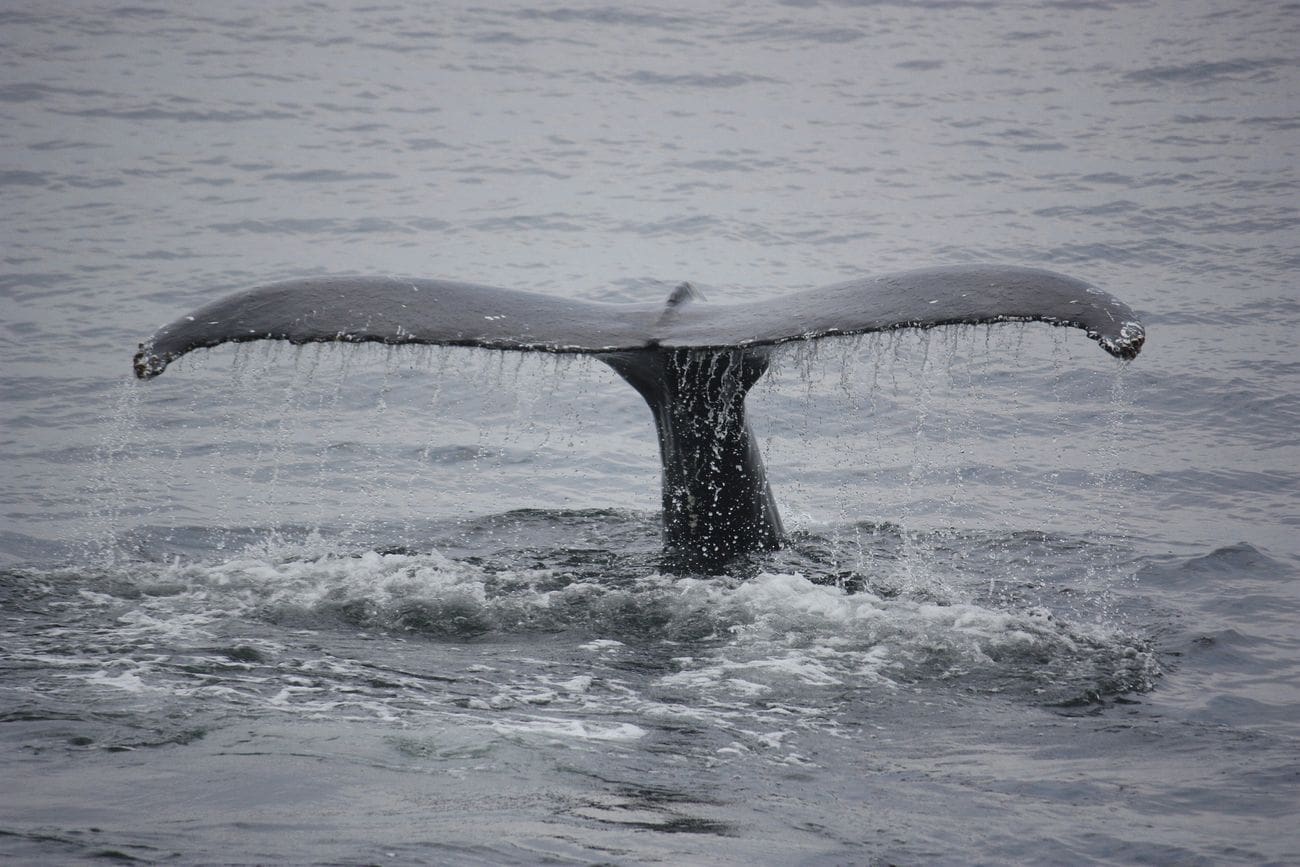
Part of being a global nomad is traveling responsibly. Tourist dollars enrich communities and support thousands of jobs. Icelandic food is delicious and unique enough without trying these items.
Countries often take steps to protect their natural resources because of the money tourists pay to go there (ex. Mountain gorillas in Rwanda or recently Maya Bay in Thailand).
If you travel responsibly, your adventures give back to local communities all over the world.
A Brief History of Icelandic Food
For centuries, the harsh winters of the of this northern island nation have shaped Icelandic food. The food of Iceland is a testament to the ingenuity of its people and the resilience of their ancestors.
The cold climate and rugged terrain meant meals were often simple, but filling.
Vikings favored cold weather crops such as barley, rye, and oats. Unsurprisingly, meat and seafood were a cornerstone of the Icelandic diet.
Even today, Icelandic sheep outnumber people in Iceland.
Iceland is a land of contrasts. The land of fire and ice.
The Vikings first discovered Iceland in 830.
Settlement occurred over the following centuries. They took advantage of the abundant sea life to feed a burgeoning population.
The settlers brought with them livestock, recipes, and cooking techniques. It would shape Iceland’s food culture for centuries to come.
In the years that followed Icelanders took advantage of the rich Atlantic Ocean that surrounds the island. They’ve incorporated the bounty of the sea into many of their dishes to create Icelandic food as it exists today.
Icelandic food is amazing, from rich and flavorful cod to sweet and succulent shrimp.
The Icelandic Food Scene Today:
Today, the local food scene in Iceland continues to thrive. The local cuisine here has both traditional dishes and new favorites. With a new generation of Icelandic chefs reinterpreting local dishes. They highlight local ingredients in their cooking of Icelandic food.
There are so many candidates for Best Restaurants in Iceland. There are fancy Michelin star restaurants (like Matur Og Drykkur). And down to earth Icelandic restaurants like burger joints or hot dog stands. You can get almost every type of cuisine in Iceland – there is even a Costco!
Costco is actually one of the best places to stock up cheaply on food if you’re visiting Iceland. It’s a great place to get everything you need to make Icelandic meals cheaply.
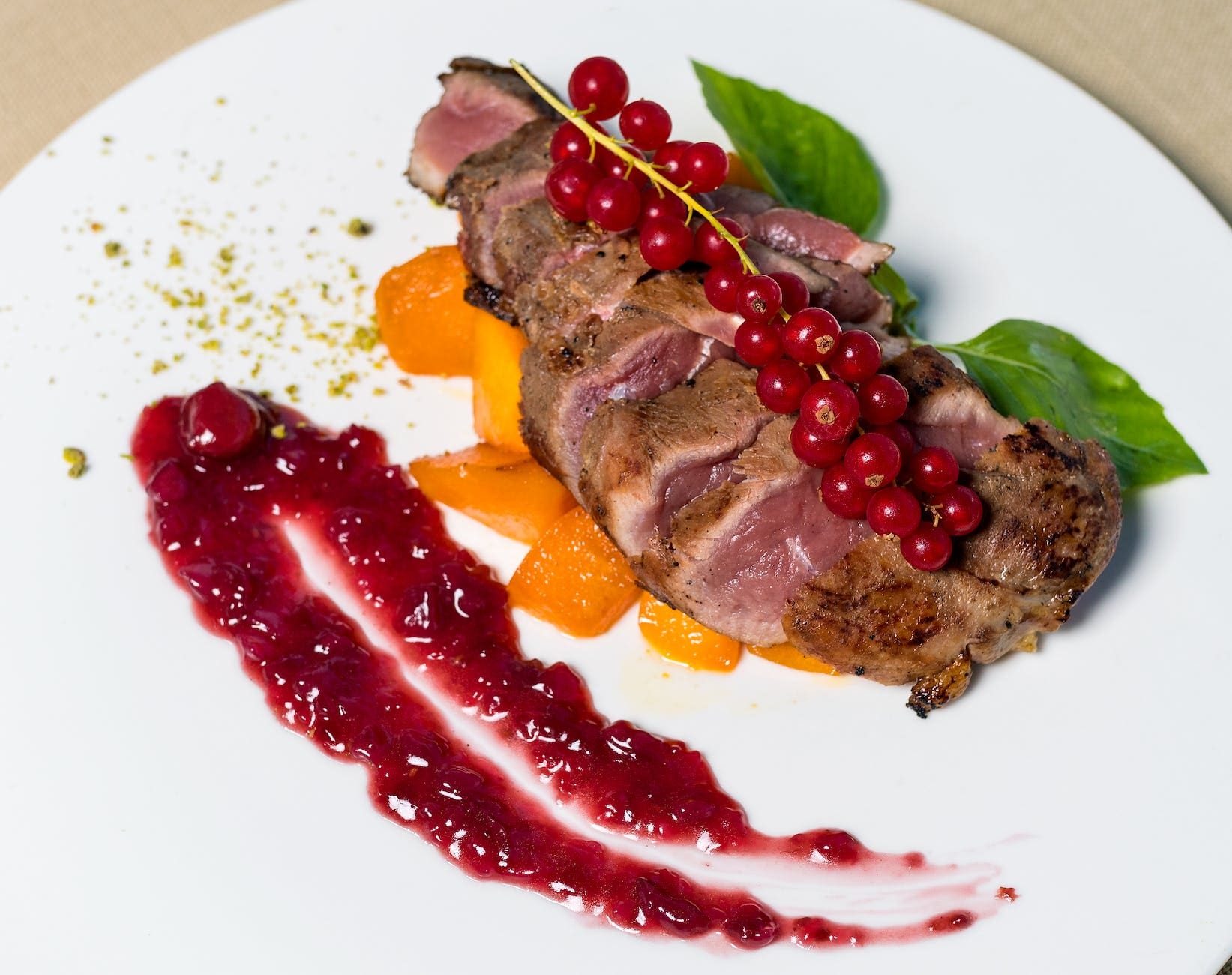
Despite the cosmopolitan nature of the country, some dishes remain uniquely Icelandic.
Trying Icelandic Food Yourself
One of the things that I love most about traditional Icelandic foods is their simplicity.
Icelandic food, whether it’s a bowl of hearty fish stew or grilled cod, Icelandic cuisine is always flavorful and nourishing.

I hope that sharing my love of Icelandic food inspires you to head to that amazing island and try it for yourself. And try the fermented shark! Be brave – it’s an experience…isn’t that why we travel?
Looking for another European vacation? Why not hop over to Luxembourg for a jam-packed day of history, culture and food

